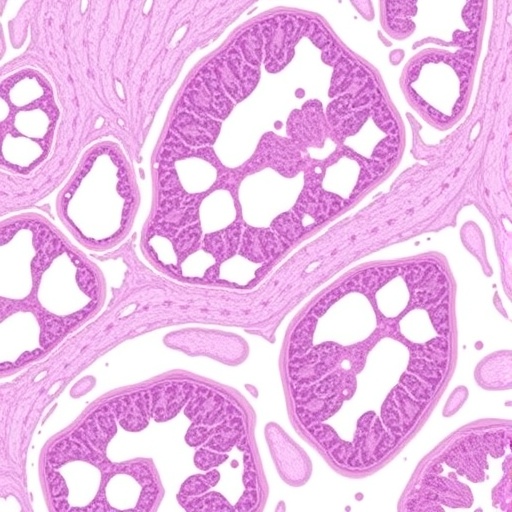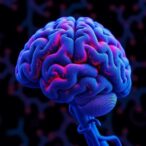
In a groundbreaking advancement at the intersection of artificial intelligence and medical diagnostics, a new study introduces “HistoGPT,” an innovative language model specifically designed to generate dermatopathology reports from gigapixel whole slide images (WSIs). Published recently in Nature Communications, this work by Tran, Schmidle, Guo, and colleagues heralds a transformative step toward automating complex pathological interpretations, traditionally reliant on exhaustive human expertise. The implications of this research extend beyond efficiency gains; it promises heightened accuracy, standardization, and unprecedented scalability in dermatological diagnostics, leveraging the limitless data embedded in ultra-high-resolution histopathological images.
Dermatopathology, a specialized branch of pathology focusing on skin diseases at the microscopic level, requires meticulous analysis of tissue biopsies. Whole slide imaging technology digitizes these biopsies into gigapixel-sized images, capturing microscopic details in extraordinary resolution. However, the sheer volume and complexity of such images pose significant challenges for pathologists. Manually analyzing billions of pixels is time-consuming, prone to subjectivity, and vulnerable to diagnostic discrepancies. HistoGPT offers an elegant technological solution, combining state-of-the-art computer vision with advanced natural language processing to automate report generation directly from WSIs.
The core innovation behind HistoGPT lies in its dual capability: it processes the immense spatial data of gigapixel images and translates intricate morphological features into coherent, clinically relevant textual descriptions. Unlike conventional AI models trained separately on image classification or text generation, HistoGPT integrates these modalities into a unified architecture. This synergy enables the model to comprehend histological patterns at microscopic scales and articulate findings in professional dermatopathology language, a feat achieved through extensive training on paired image-report datasets.
Central to HistoGPT’s success is its sophisticated image encoder, engineered to handle the extensive resolution of WSIs without sacrificing detail. Instead of downsampling or cropping—which could omit critical pathological clues—the model uses hierarchical feature extraction techniques. These methods progressively capture tissue morphology from cellular to architectural levels, preserving diagnostic nuances. Coupled with a transformer-based language generator, HistoGPT synthesizes these visual embeddings into structured reports encompassing lesion characterization, differential diagnoses, and recommended clinical actions.
Training HistoGPT required an unprecedented dataset encompassing thousands of whole slide images alongside expertly curated dermatopathology reports. The diversity of skin pathologies included in the training corpus allowed the model to generalize across common conditions such as psoriasis, melanoma, and basal cell carcinoma, as well as rarer diagnoses. Rigorous validation demonstrated that HistoGPT’s autogenerated reports matched or exceeded the diagnostic accuracy of board-certified dermatopathologists, highlighting not only efficiency but clinical reliability.
Beyond raw diagnostic capability, HistoGPT introduces significant workflow optimizations for pathology labs. The automated generation of preliminary reports expedites case triaging, enabling pathologists to focus their attention on complex or ambiguous cases. The system also enhances documentation consistency, reducing inter-observer variability—a well-known challenge in dermatopathology diagnostic practice. Moreover, by greatly accelerating analysis times, HistoGPT can alleviate the growing global shortage of trained pathologists, particularly beneficial in resource-limited settings.
The transformative potential of HistoGPT extends into telemedicine and digital health ecosystems. As dermatopathology increasingly moves toward digital platforms, integrating AI-powered report generation seamlessly supports remote consultations and second opinions. This accelerates diagnostic turnaround time and may improve patient outcomes by enabling earlier therapeutic interventions. The researchers also emphasize the scalability of HistoGPT, envisioning its adaptation to other histological specialties beyond dermatopathology, such as hematopathology and neuropathology.
While HistoGPT’s performance is promising, the study thoughtfully addresses ethical considerations inherent in deploying AI within clinical contexts. Issues of transparency, interpretability, and accountability remain paramount; HistoGPT incorporates attention mechanisms and explainability modules designed to reveal the basis of its diagnostic assertions to human reviewers. This transparency aims to build trust among clinicians reluctant to cede interpretive control entirely to algorithms, safeguarding the collaborative nature of medical decision-making.
Technically, the research breaks new ground by demonstrating that large language models, originally architected for natural language understanding and generation, can be effectively repurposed to digest and interpret dense visual medical data. This cross-modal approach challenges the traditional boundaries of computer vision and NLP, setting a precedent for future multimodal AI applications in medicine. The computational efficiency of HistoGPT was optimized through parallel processing on high-performance GPUs, enabling feasible deployment despite the heavy data demands of gigapixel image analysis.
The collaboration among multidisciplinary teams—comprising AI specialists, dermatopathologists, and software engineers—was critical in aligning the model’s capabilities with clinical realities. The iterative design process incorporated extensive user feedback from practicing pathologists, ensuring the generated reports reflect real-world diagnostic language and clinical workflows. This human-in-the-loop approach underscores the complementary relationship between artificial intelligence and medical expertise.
Importantly, the researchers highlight the adaptability of HistoGPT to evolving clinical guidelines and pathological taxonomies. The model’s architecture supports continuous learning, allowing it to update its knowledge base as new dermatopathological criteria and nomenclature emerge. This dynamic learning capability future-proofs the system, addressing a common limitation of static AI models rendered obsolete by changing medical standards.
Looking ahead, the team envisions integrating HistoGPT with ancillary diagnostics such as immunohistochemistry and molecular profiling data, further enriching report content and precision. By combining morphological analysis with genetic and protein expression insights, future AI-driven pathology platforms could offer comprehensive, multimodal diagnoses enhancing personalized medicine strategies. The open-source nature of the project invites community collaboration to expand and refine this promising tool.
The publication of HistoGPT not only contributes a powerful new instrument to the pathology toolkit but also exemplifies the accelerating convergence of AI and medicine. As diagnostic complexity grows with advancing biomedical knowledge, AI systems like HistoGPT offer essential support to clinicians, fostering improved accuracy, efficiency, and patient care. This landmark study sets a course toward a future where human expertise and machine intelligence coalesce seamlessly in medical diagnostics.
As the landscape of medical AI evolves rapidly, HistoGPT stands as a beacon demonstrating practical implementation of multimodal deep learning models in clinically critical applications. Its success paves the way for broader acceptance and integration of AI in pathology laboratories worldwide, representing a vital step in the digital transformation of healthcare diagnostics. This pioneering work underscores the potential of harnessing cutting-edge technology to decode biological complexity and revolutionize patient outcomes.
Subject of Research:
Generating dermatopathology reports automatically from gigapixel whole slide images using an advanced AI language model, HistoGPT.
Article Title:
Generating dermatopathology reports from gigapixel whole slide images with HistoGPT.
Article References:
Tran, M., Schmidle, P., Guo, R.R. et al. Generating dermatopathology reports from gigapixel whole slide images with HistoGPT. Nat Commun 16, 4886 (2025). https://doi.org/10.1038/s41467-025-60014-x
Image Credits:
AI Generated
Tags: advanced natural language processing in healthcareartificial intelligence in medical diagnosticsautomation in pathological interpretationschallenges in tissue biopsy analysiscomputer vision in pathologydermatopathology report generationdigital pathology advancementsenhancing diagnostic accuracy in dermatologygigapixel whole slide imagingHistoGPT dermatopathology automationscalability in medical diagnosticsskin disease analysis technologies



